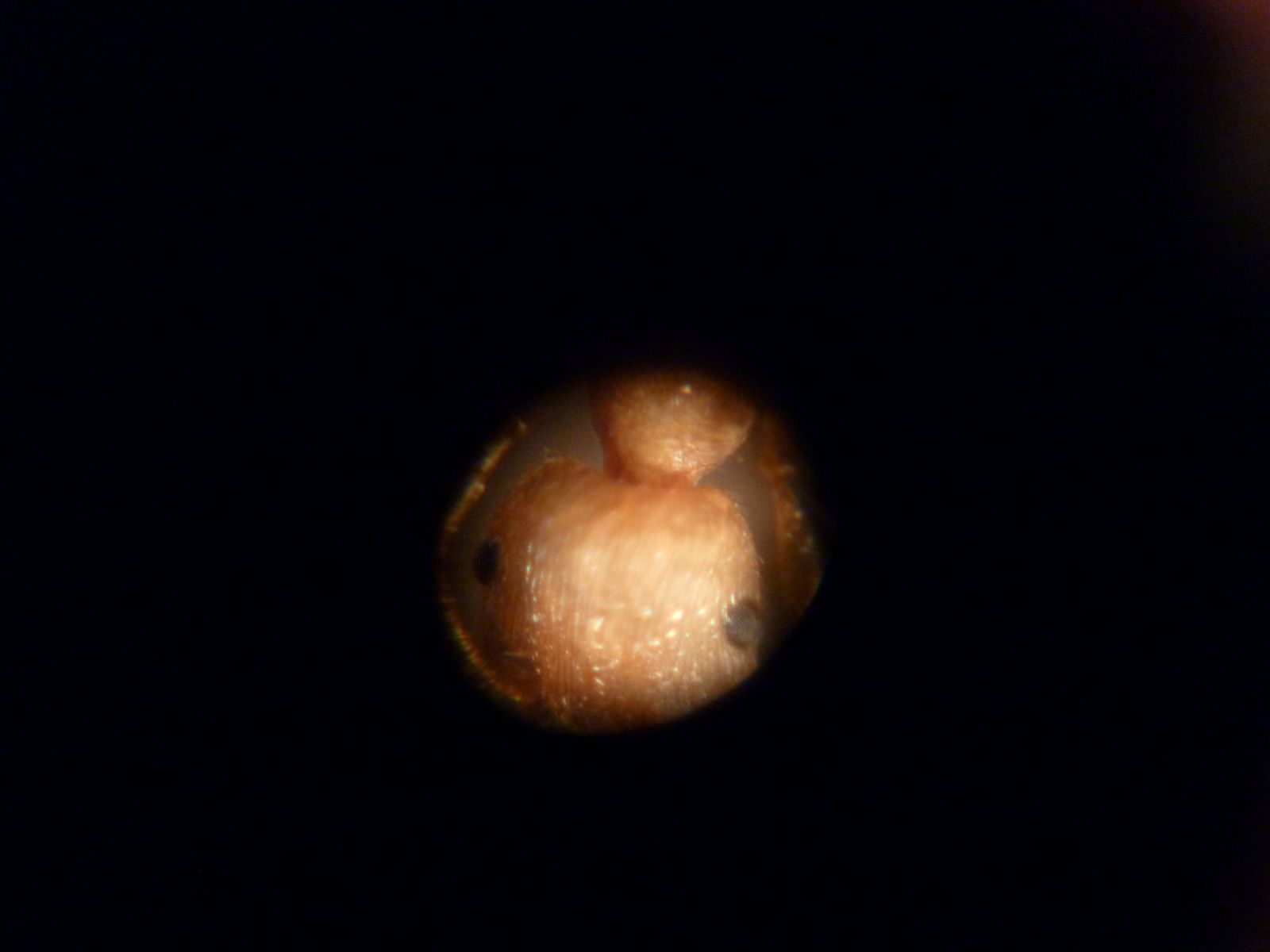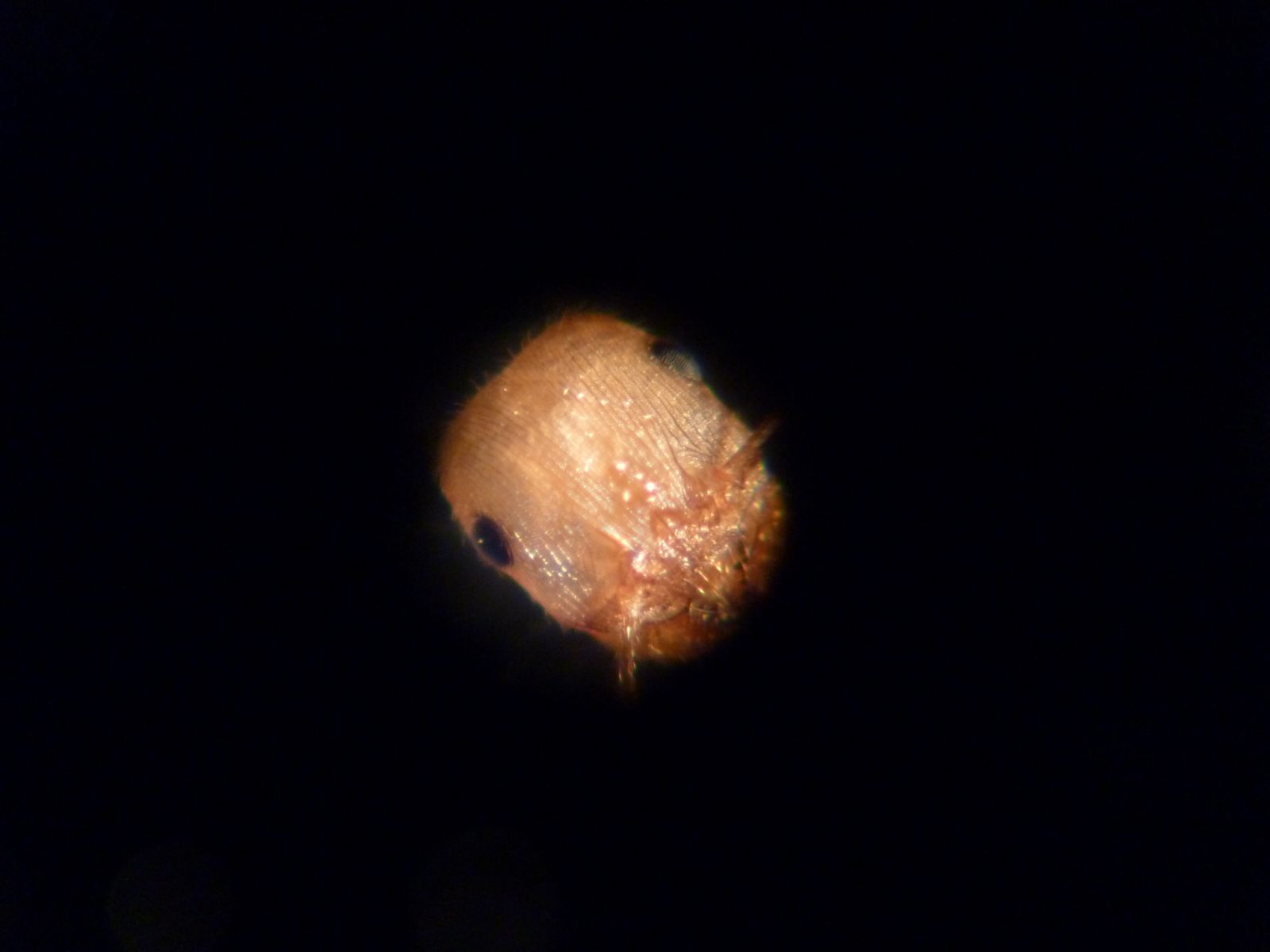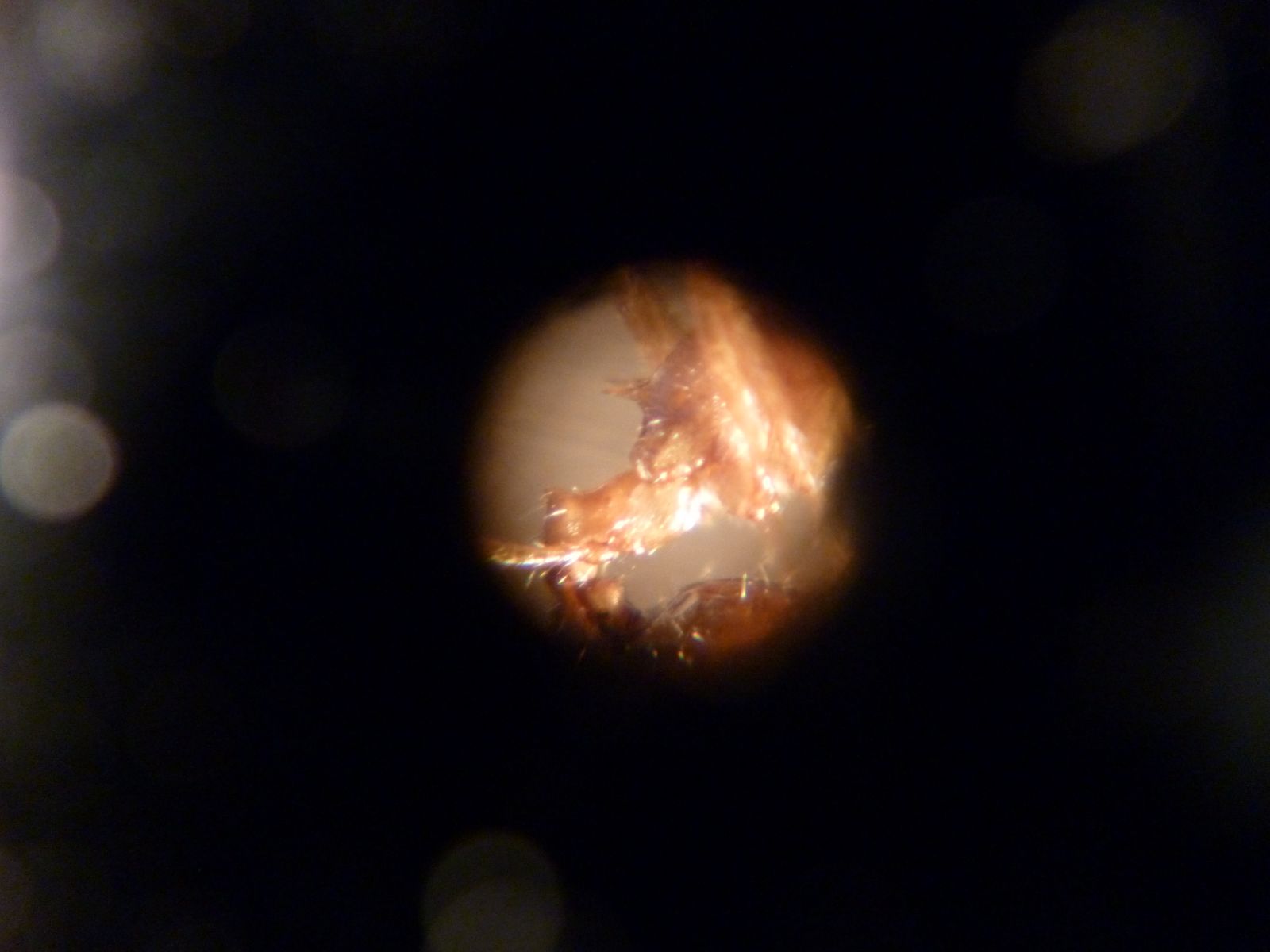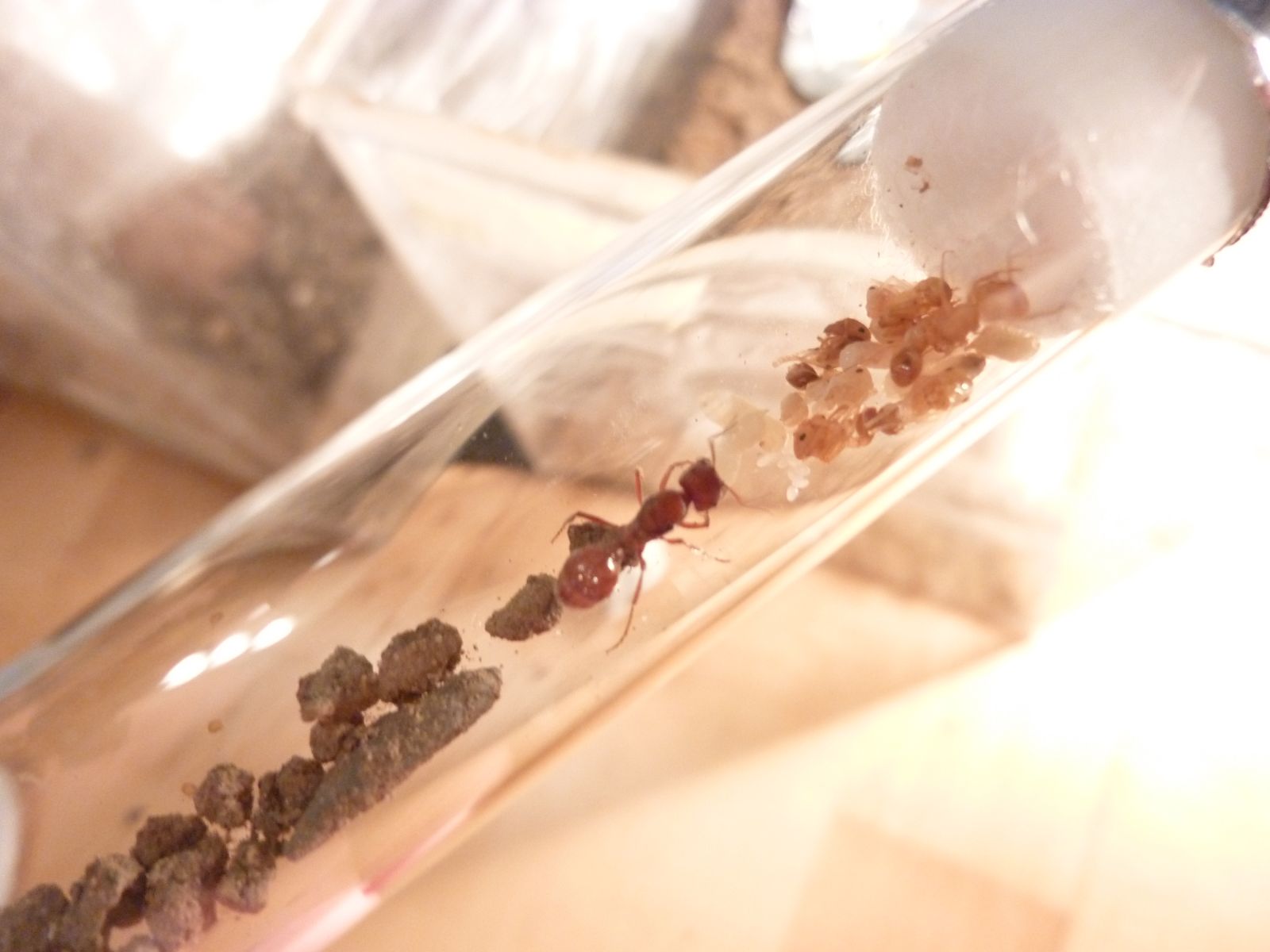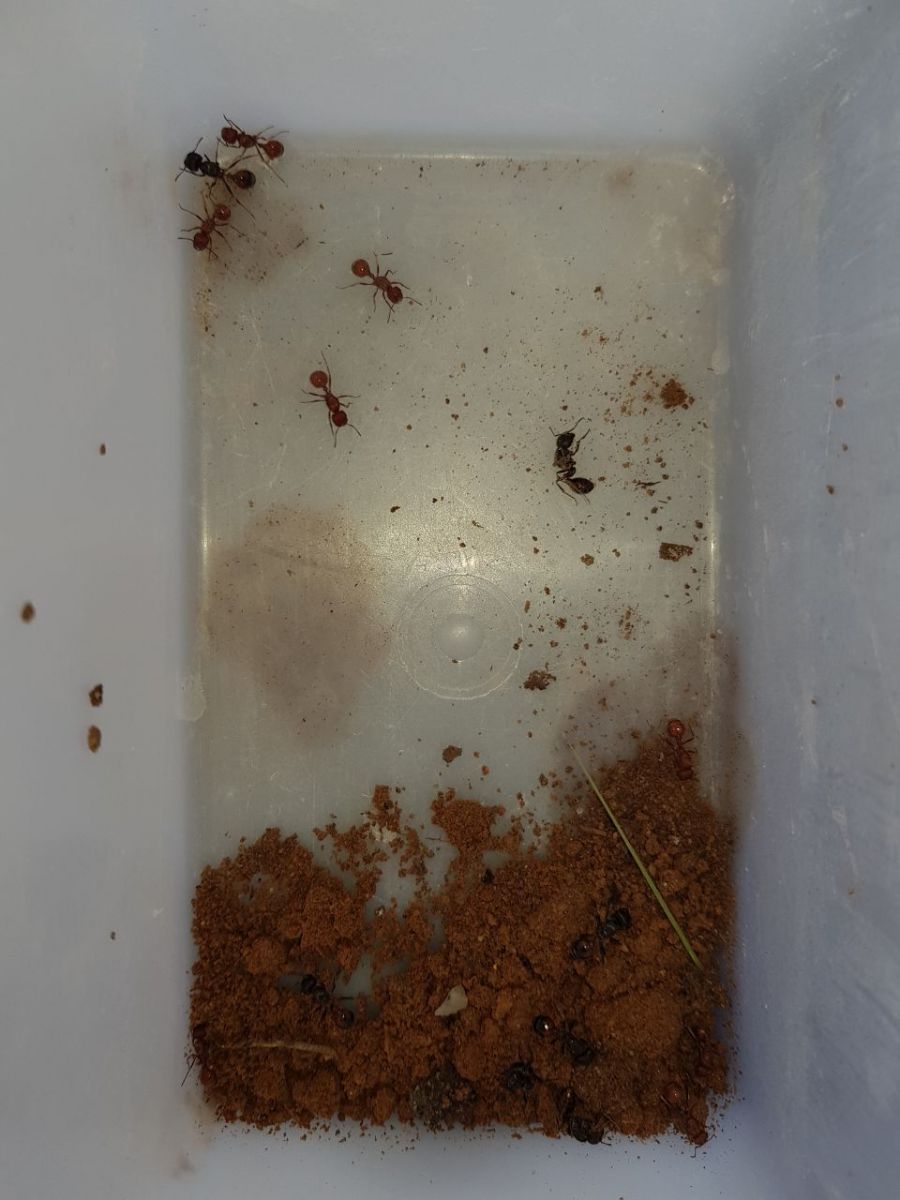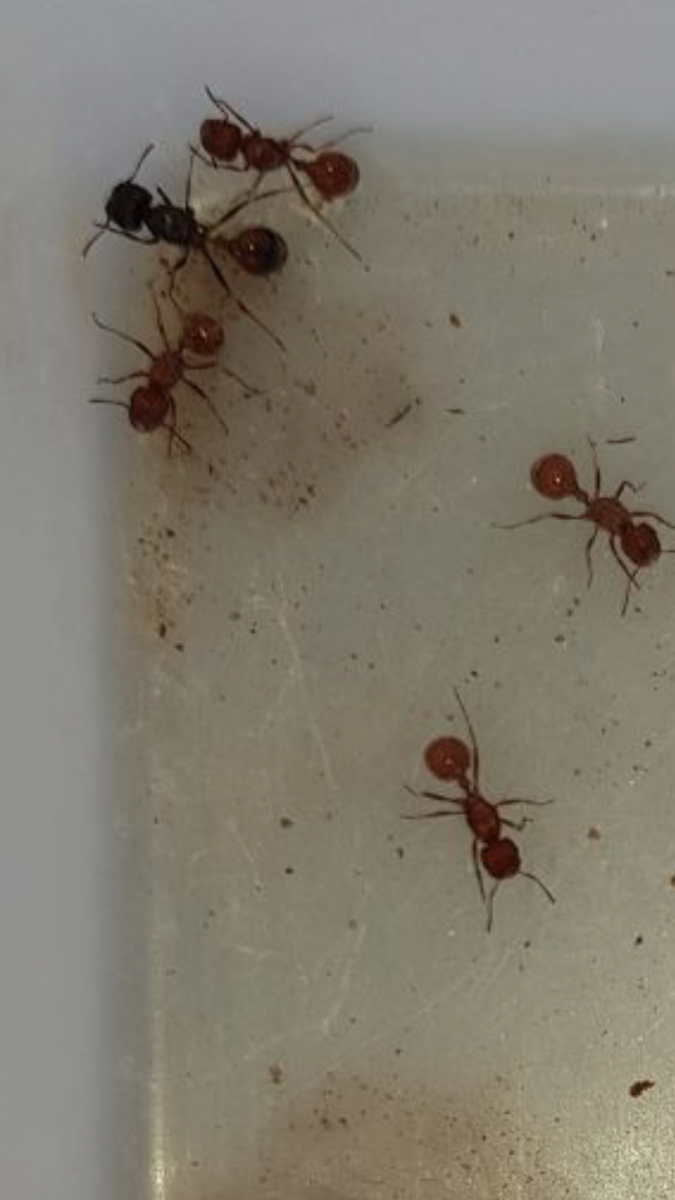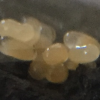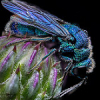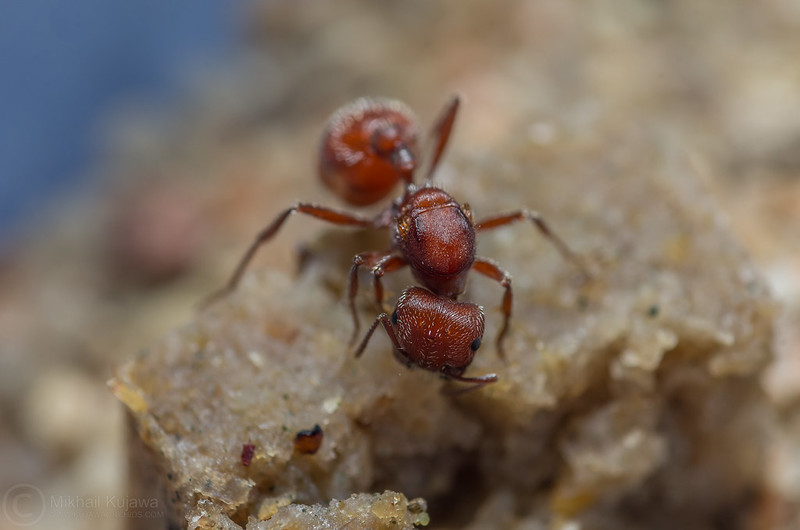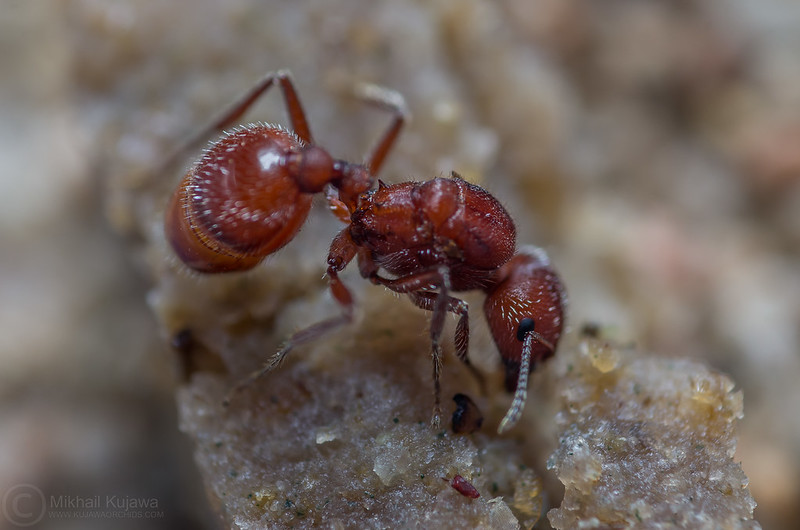Hello,
I am still not sure if my small colony is Pogonomyrmex occidentalis or subnitidus.
The queen is pure red with hardly any noticeable color differences at her body segments, same goes for workers.
They were found near Mexico.
In size the queen is just 1 mm ( 0,039 inch) smaller than a Pogonomyrmex rugosus queen.
I already went on antwiki.org for Pogonomyrmex keys and took microscopic pictures. The only 2 species left seem to be Pogonomyrmex subnitidus and Pogonomyrmex occidentalis. The prominent spines, possible size, mandibles, thorax, etc. point out to be one of the 2. Pogonomyrmex salina came close but has less prominent spines.
Here the pictures of a dead newborn nanitic (not one of the brood boosted ones) that did not fully color out and looks yellowish the real color is red.:
very outstanding spines:
Here are some pictures of the queen and her brood, she was brood boosted so the old workers have not been used for the microscopic ones, so I can't guarantee the larger workers seen there are the same species:
Here is a picture in large and zoomed in of Pogonomyrmex rugosus and those mysterious queens in size comparison:
Edited by marcel, September 22 2017 - 6:21 AM.





